The Shriner Fez: History, Symbolism, and Legacy is a tale that intertwines tradition, fraternity, and culture. The red hat with tassel is not just an article of clothing. It is a mark of identity, honor, and charity.
From its ancient origins to contemporary parades, the Shriner fez is still one of the most recognizable symbols in the fraternity world. In this piece, you will discover how it began, what it signifies, and why it continues to be relevant today.
Historical Background

The fez began far from America. Its roots trace back to the Ottoman Empire and North Africa, where men wore it as a daily cap. The red felt hat with a tassel became linked to identity and tradition. When European travelers saw it in the 19th century, it soon carried exotic meaning to outsiders.
Shriners in America adopted the fez in the late 1800s. They were inspired by the Ancient Arabic Order of the Nobles of the Mystic Shrine (AAONMS). The fez gave their group a unique look compared to other Masonic orders. It stood for mystery, fun, and fellowship. This tradition grew, and the fez became the trademark of the fraternity.
Symbolism of the Shriner Fez
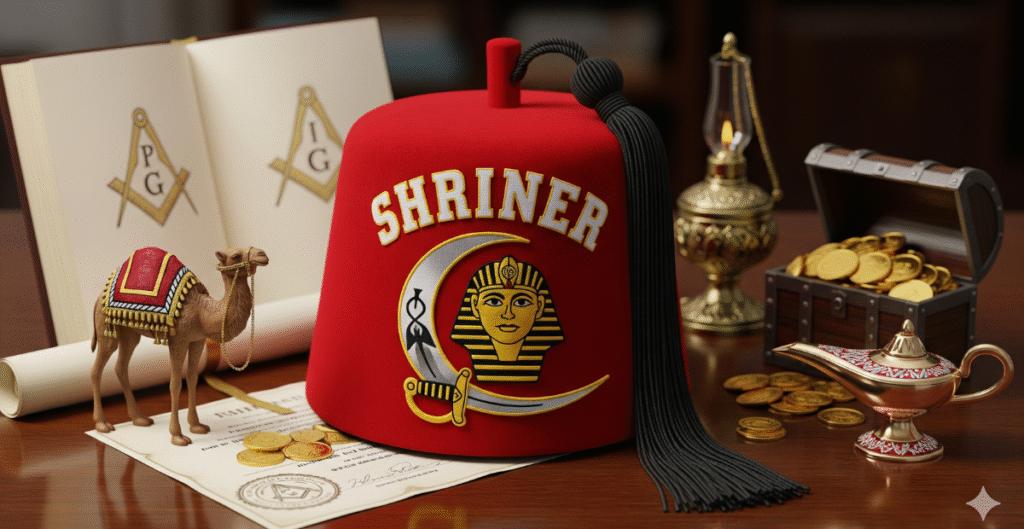
Every detail of the Shriner fez carries meaning. The red color is linked with sacrifice and strength. The long black tassel is a sign of unity. The crescent emblem on the fez features a scimitar and sphinx. The scimitar represents protection, while the sphinx symbolizes wisdom.
These symbols remind Shriners of their duty to charity and brotherhood. The fez is not only a hat. It is a promise of service to children and communities. Wearing it is a public sign of loyalty to the values of the Shrine.
Role in Rituals and Ceremonies

In rituals, the fez has a central role. During initiation ceremonies, new members wear it to show they are part of the order. At parades, circuses, and temple meetings, the sea of red fezzes creates a powerful image of unity.
Different fezzes also mark rank or role. Officers may have special embroidery, while ceremonial versions often feature jewels. The fez becomes both a uniform and a badge of honor during Shrine events.
Variations of the Shriner Fez
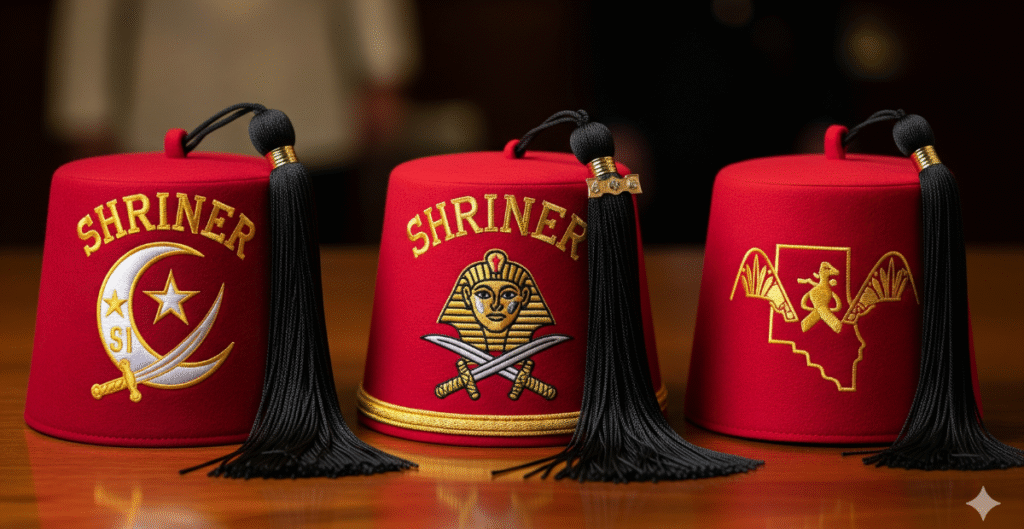
Not all fezzes look the same. The standard fez is plain red with a black tassel and the Shrine emblem. Officer fezzes may have names or ranks embroidered. Some fezzes are jeweled, making them stand out in parades.
Local temples often design their own variations. Names of cities, temples, or special groups within the Shrine may appear on the fez. This makes each piece unique and tied to a specific history.
Types of Shriner Fezzes
| Type | Features | Purpose |
| Standard Fez | Red felt, black tassel, emblem | General members |
| Officer Fez | Embroidery with rank/title | Leaders of temples |
| Jeweled Fez | Studded with stones | Ceremonial, parades |
| Temple-Specific Fez | Names or logos added | Local identity |
The Shriner Fez in Public Life and Culture
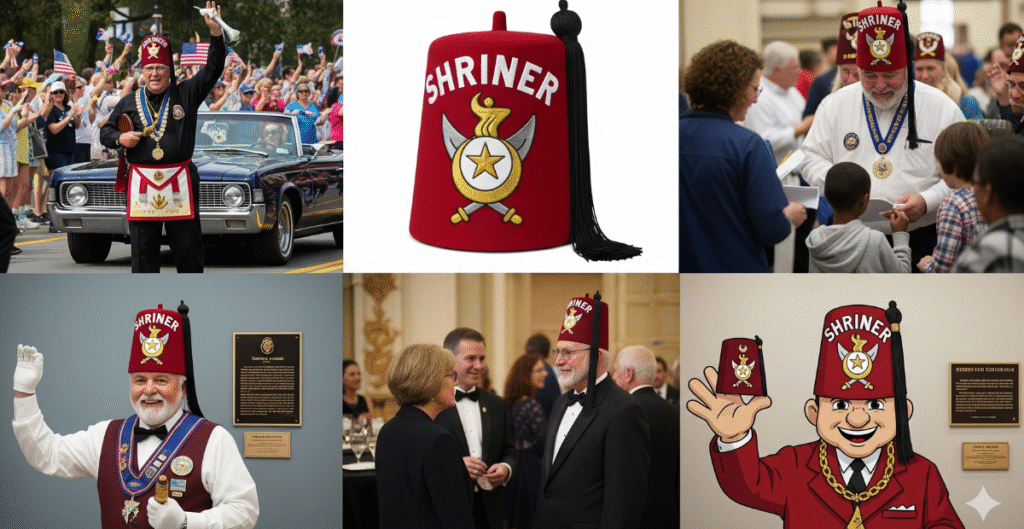
The fez is more than a private ritual symbol. It appears in parades, circuses, and charity events. Crowds easily recognize Shriners by their red fezzes and friendly presence.
In popular culture, the fez has appeared in movies, TV shows, and cartoons. This spread its image beyond the fraternity. Even people who do not know much about Shriners often know the red hat.
Modern Relevance and Community Role

The fez still plays a role today. Shriners wear it when raising money or promoting their hospitals. It reminds the public of their mission to help children in need.
Although fraternal orders have seen a decline in numbers, the fez remains a symbol younger generations recognize. It is tied not only to tradition but also to visible acts of charity.
Misunderstandings and Controversies

Some people confuse the fez with religious or political symbols. Because of its Ottoman roots, outsiders may mistake it for a sign of Islam or Middle Eastern politics. In truth, the Shriner fez has no religious link.
Another debate is cultural appropriation. The Shrine borrowed Eastern imagery for its rituals, which critics say reflects Orientalism. Shriners today often explain that their use is symbolic and tied to tradition, not religion or politics.
Collecting and Preserving Shriner Fezzes
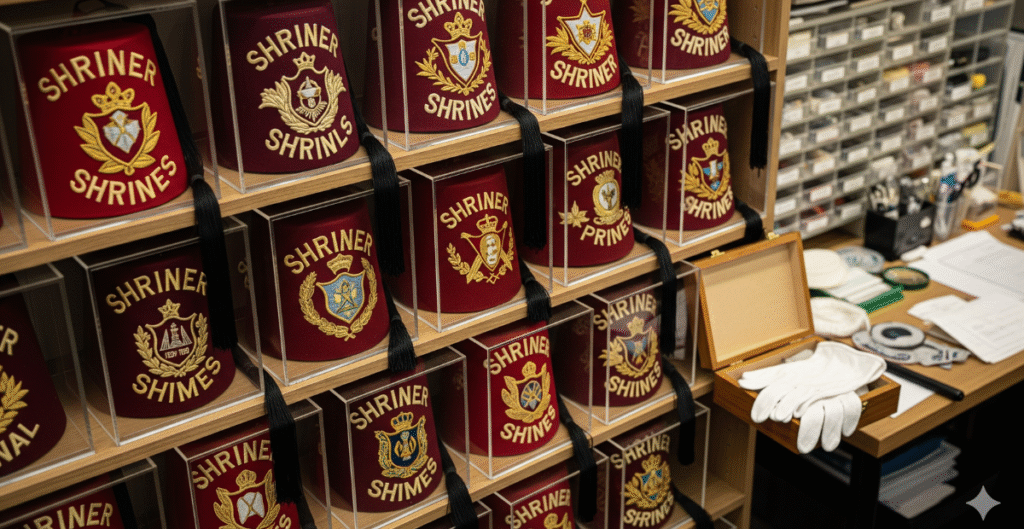
Old fezzes are popular collectibles. Masonic memorabilia collectors look for fezzes with embroidery, jewels, or historical ties. Fezzes linked to famous members or temples have more value.
Preserving a fez takes care. Exposure to sunlight can fade the red felt. Dust and humidity can damage the fabric. Collectors use boxes, cases, or glass displays to protect them. Museums also keep notable collections that show the history of the Shrine.
Collecting Shriner Fezzes – Key Points
| Factor | Importance |
| Age | Older pieces hold higher value |
| Embroidery | Adds uniqueness and demand |
| Condition | Well-preserved fezzes fetch more |
| Historical Link | Famous temples increase value |
Case Study: Shriners Hospitals and the Fez

One of the strongest links between the fez and charity is the Shriners Hospitals for Children. Founded in 1922, the network provides free medical care for children with orthopedic conditions, burns, spinal cord injuries, and cleft lip and palate.
At public events, Shriners wear their fezzes to promote hospital work. The hat is not just tradition but also a tool for fundraising. When people see the fez, they often think of the hospitals and the care given to thousands of children.
Impact of Shriners Hospitals
| Year Founded | Hospitals in Network | Children Helped Annually |
| 1922 | 22 | Over 150,000 |
Connection Between the Shriner Fez and Freemasonry
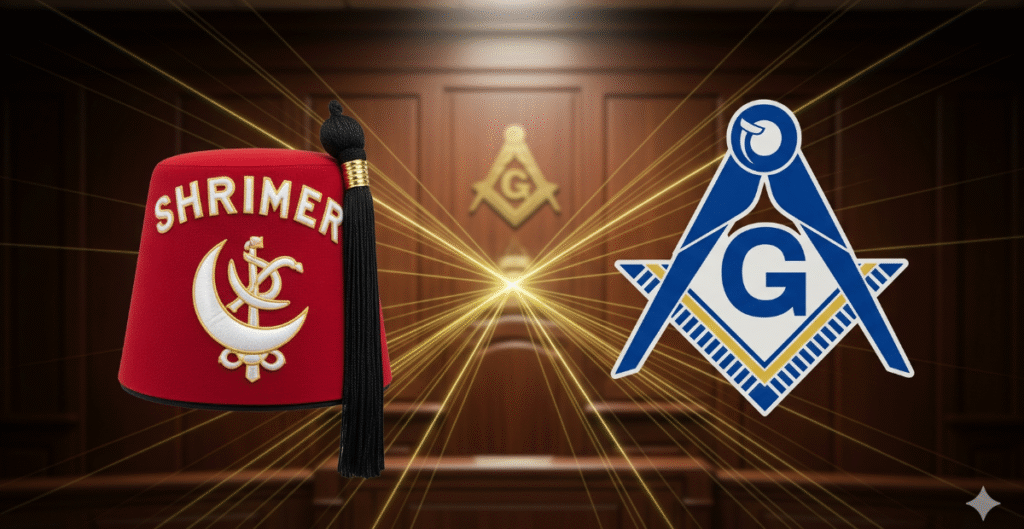
The Shriner fez cannot be understood without looking at Freemasonry. The Shriners are part of the Masonic family, but they stand out because of their strong focus on fun and charity. While Masons usually wear aprons and other symbols, Shriners chose the fez to give their order a distinct identity.
The fez became a marker that separated Shrine activities from traditional lodge work. It showed that while Shriners were Masons first, they also wanted a visible and memorable symbol that set them apart. This link to Masonry gives the fez deeper meaning, as it carries the values of both groups.
The Shriner Fez in Parades and Community Events
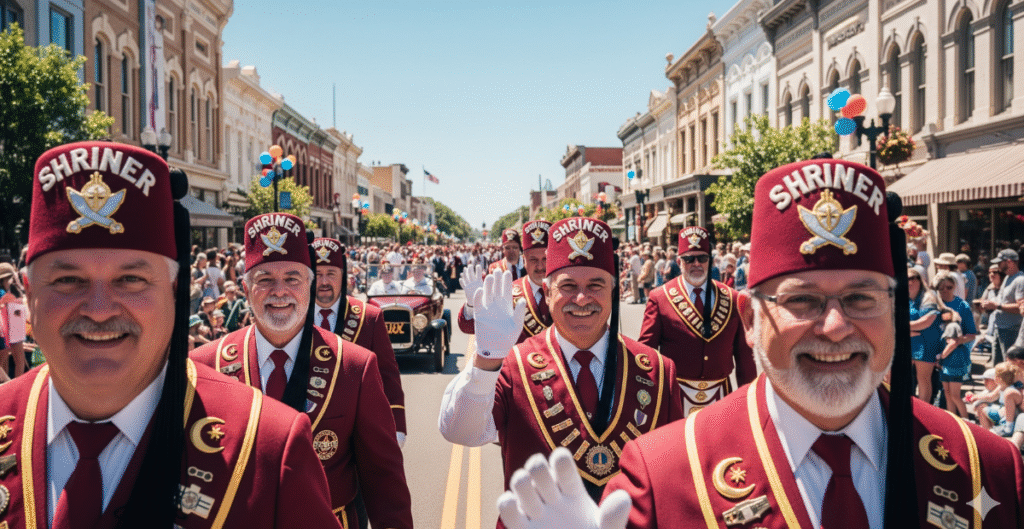
One of the most familiar places to see the fez is in a parade. Shriners often ride tiny cars, play in bands, or wave to children while wearing their red hats. The fez helps the public instantly recognize them. For many, the first memory of the Shrine is a cheerful man in a fez smiling from a parade float.
Community events also give the fez life beyond ritual halls. Festivals, circus shows, and fairs often feature Shriners raising money for children’s hospitals. The fez acts as both a uniform and a promise of goodwill, making people trust the mission behind the red hat.
Famous Shriners Who Wore the Fez

The fez is tied not only to ordinary members but also to famous names. Former U.S. presidents like Franklin D. Roosevelt and entertainers such as John Wayne and Elvis Presley were Shriners. Each wore the fez proudly, showing their link to the fraternity and its charitable goals.
These famous members helped spread recognition of the fez. When the public saw respected leaders and beloved actors wearing it, the fez gained even greater cultural weight. It proved that anyone, no matter how powerful or popular, could still wear the same red hat as every other Shriner.
Manufacturing and Craft of the Shriner Fez
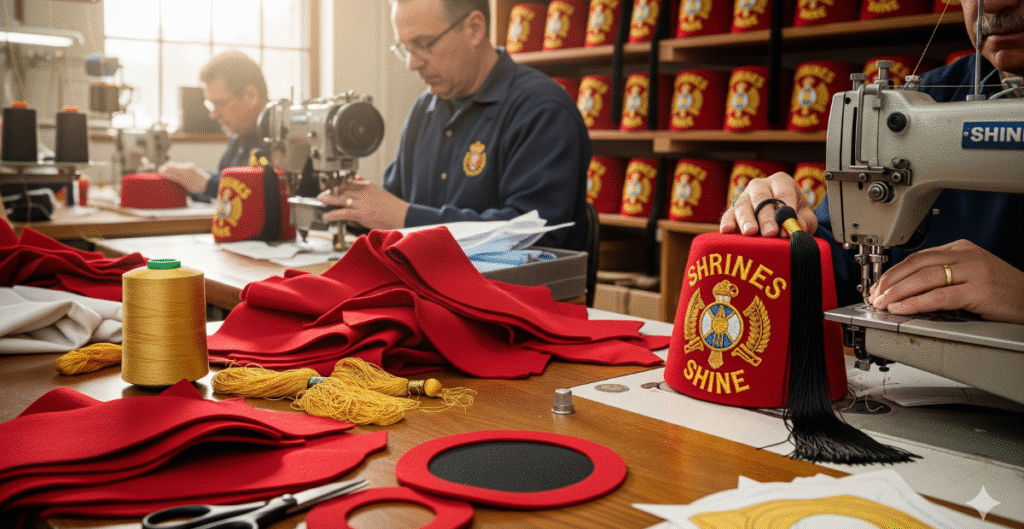
Making a fez is a careful craft. Traditional fezzes are made from red felt, usually wool, which is shaped into the stiff cone design. A long black tassel is attached at the top, and then embroidery or emblems are added by skilled workers.
Specialized companies have supplied Shriners with fezzes for over a century. Some fezzes are plain, while others are decorated with jewels, sequins, or golden thread. Collectors often seek fezzes made by historic manufacturers, since these hats show the detailed handwork of earlier times.
Global Presence of the Shriner Fez
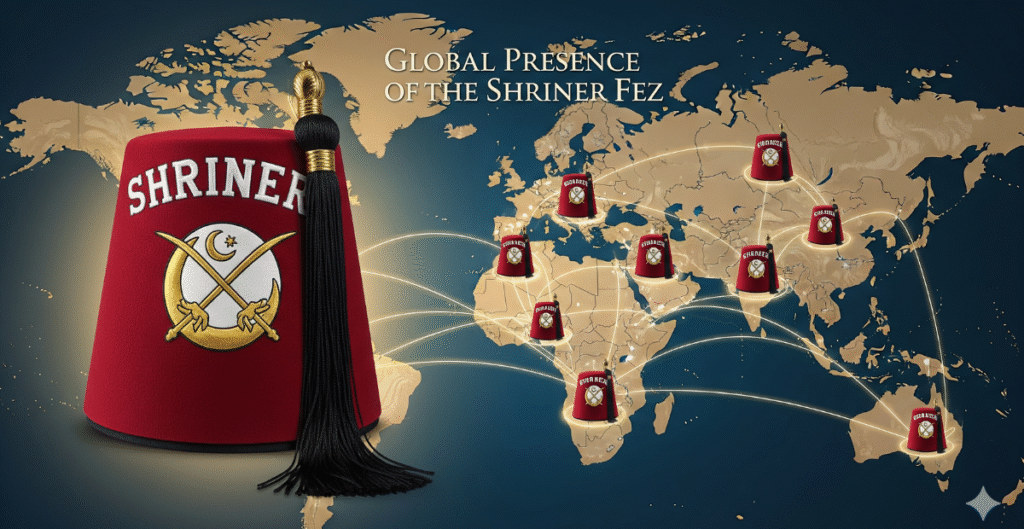
Though the fez is most visible in the United States, it also appears worldwide. Shriners have temples in Canada, Mexico, Europe, and even Asia. In every location, the fez remains the key item of dress that ties members together.
The global spread of the fez shows how powerful the symbol has become. Even outside America, the red hat means charity, fraternity, and fun. In parades abroad, locals often recognize the fez first, even before they know the details of what the Shriners do.
Faq”s
Why do Shriners wear fez?
Shriners wear the fez as a sign of membership, unity, and charity.
What does the Shriner fez symbolize?
It symbolizes strength, wisdom, protection, and service to others.
Are all Shriner fezzes the same?
No. Fezzes vary by rank, temple, and design. Some are jeweled or embroidered.
Is the fez a religious symbol?
No. While it has Middle Eastern roots, the Shriner fez is fraternal, not religious.
Can you collect Shriner fezzes?
Yes. Many collectors seek antique or unique fezzes linked to temples or officers.
Conclusion
The Shriner Fez: History, Symbolism, and Legacy is more than a story of a red hat. It is a living tradition that links the past with the present. From its roots in the Ottoman world to its role in American parades, the fez represents brotherhood, charity, and identity. Even as times change, the fez remains a lasting emblem of service and goodwill.




